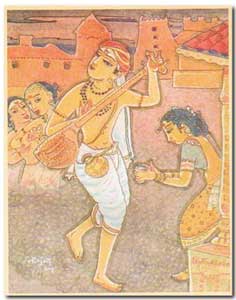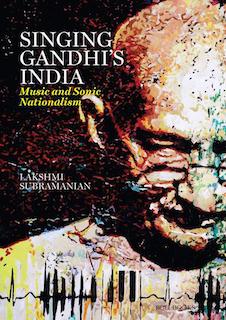
Tyagaraja worried about many things — about the death of brahmanatva — the lofty way of thinking and living, of sham religiosity, of sycophancy, of Lord Rama’s reluctance to bestow grace. In one such song in the poignant raga Naganandini, he laments: sattaleni dinamunu vacchena
Such days have come…
Days that have no strength (sattu)
Strength that faith in God gives.
Reverence for parents and teachers is nought
And men indulge in evil acts
Such days have come…
But he did not worry for music except that it should not be divorced from bhakti. […]
What makes one refer to Carnatic music as “classical or art music”? Evoking Dr. Ashok Ranade’s suggestion of the musical pentad in India, religious music is a different genre of music from art music. Religious music consists of repertoire that is religious in content and it may and very often does use ragas and the tala. But the whole musical effect is towards heightening religious fervour. The repertoire of Carnatic music is predominantly religious; but the intent of a Carnatic concert is not religious — it is aesthetic. A good presentation of a composition focuses on correctness of lyrics, of patantara, of delivering raga nuances, of following the kala pramana or measure of time or laya, and indeed of bhava or communication of an emotive content. This emotional content is not religious but musical; intensity of imagination, artistry and delivery must evoke emotion, not literal meanings of words. […]
Even the brilliant Semmangudi Srinivasa Iyer, who was himself deeply religious, clarified that bhakti is essential for a Carnatic music, but this bhakti is for music, not for any personal deity. […]
Read the full article by Dr. Lakshmi Sreeram titled “Carnatic Music Ruminating the Landscape” (Indian Horizons July-September 2013, Indian Council for Cultural Relations New Delhi, PDF, 14,5 MB)
[Bold typeface added above for emphasis]

Mahatma Gandhi used community voices to mobilise people:
Music of the mind and heart >>
More about the above person(s) and topics
Periodicals and sites included | More resources | Disclaimer >>
Learn & practice more
A brief introduction to Carnatic music (with music examples and interactive map)
Bhava and Rasa explained by V. Premalatha
Free “flow” exercises on this website
Introduction (values in the light of modernity)
Video | Keeping tala with hand gestures: Adi (8 beats) & Misra chapu (7 beats)
Why Carnatic Music Matters More Than Ever
Worldcat.org book and journal search (including Open Access)
